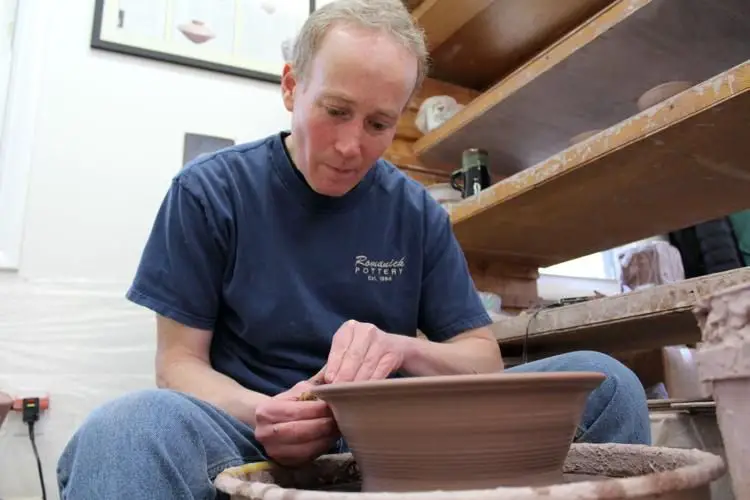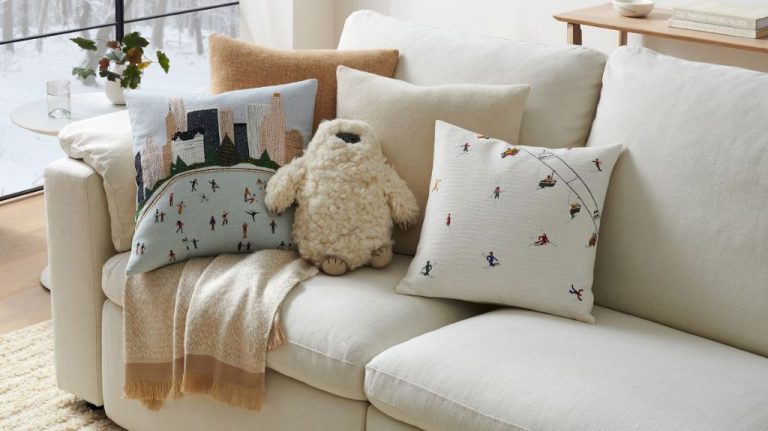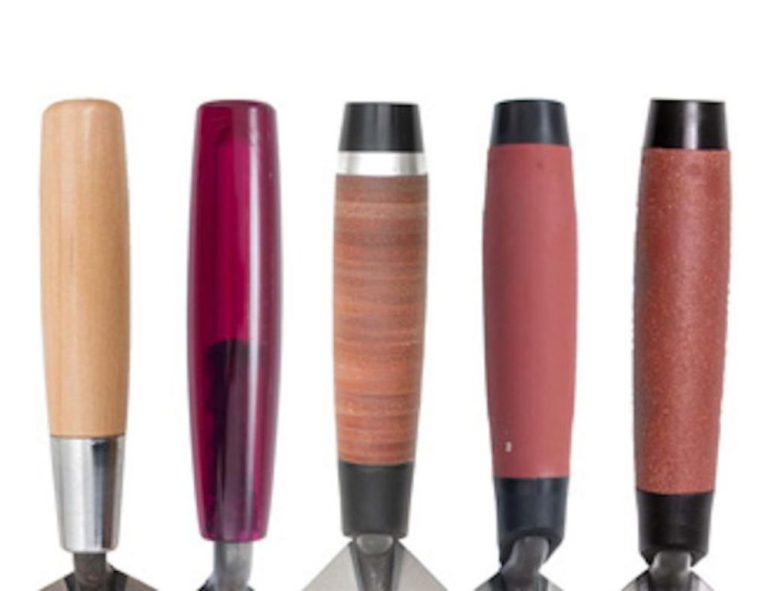What Crafts Did The Pueblos Make?
The Pueblo peoples are American Indian peoples of the present-day Southwestern United States. There are currently 21 communities that are considered Pueblo tribes that reside predominantly in New Mexico, Arizona, and Texas. Pueblo peoples have continuously inhabited the southwest region for over thousands of years. They are best known for their unique adobe architecture and distinctive crafts.
Pueblo crafts refer to the wide array of handmade goods created by Pueblo peoples using available indigenous materials. Pueblo peoples are renowned for their expertise in pottery, weaving, jewelry-making, wood carving, and basketry. The rich artistic heritage of Pueblo crafts spans back hundreds of years and continues to be an important element of Pueblo culture today.
In this article, we will provide an overview of the major types of traditional crafts made by Pueblo peoples, including their methods, styles, and cultural significance.
Pottery
Pottery was one of the most important and prevalent crafts made by the Pueblo tribes. The Pueblo peoples crafted both utilitarian and decorative pottery using natural clay found throughout the Southwest. Women were the primary pottery makers, and they used techniques like coiling, scraping, and painting to create unique and beautiful works.
Some common utilitarian vessels were bowls, jars, and pitchers for storing, serving, and carrying food and water. These were often simple gray or brown earthenware. But the Pueblos also made intricately painted ceremonial pottery, including items like ladles and figurines used in rituals. These decorative pots featured painted geometric designs in black, white, and red.
Over time, Pueblo pottery styles evolved and incorporated influences from other regions. The Hopi tribe began incorporating motifs from captured Spanish pottery in the 17th century after the Pueblo Revolt. In the late 19th century, Hopi potters started making Revival Style pottery aimed at non-Native markets, with bolder designs. Through innovation and adaptation, Pueblo pottery maintained its significance while evolving artistically.
Weaving
Weaving was an essential craft for the Pueblo peoples, who used natural materials like cotton, yucca, and wool to create beautiful textiles. Women were the primary weavers, and they wove utilitarian blankets, rugs, and baskets to be used in daily life. The Pueblo peoples grew cotton and sheared Navajo Churro sheep to obtain wool for their weavings.
Blankets were woven on large upright looms and were an important part of Pueblo life. Women wove thick, warm blankets to provide protection from the harsh Southwestern winters. Decorativeelements like stripes and diamond patterns were woven into some blankets.
Baskets were also an important woven item, used for gathering herbs and carrying water. Yucca and willow were common basketry materials. The baskets were coiled and twined in various patterns and shapes for different purposes. Some were woven tightly to hold water, while others had loose weaves for holding seeds and herbs.
Jewelry
The Pueblo peoples were known for their beautiful and intricate jewelry pieces, often adorned with materials like turquoise, silver, and shell. Some of the common jewelry types crafted by the Pueblos included:
Necklaces – Pueblo necklaces incorporated materials like turquoise, jet, and shell beads. These were sometimes fashioned into elaborate mosaic collars or simple strung necklaces. Certain styles incorporated silver beads as well.
Bracelets – These adornments for the wrist also incorporated turquoise, jet, and shell. Some bracelets were simple silver bands, while others had intricate mosaic or stamped designs.
Pins – Decorative pins were fashioned out of silver and turquoise into shapes like animals, lightning bolts, and other motifs. These were used to fasten blankets and could be quite large and elaborate.
Kachina Dolls
Kachina dolls are an important artistic tradition among the Pueblo tribes of the American Southwest. Kachinas (also spelled katsinas) are spirits in Pueblo religious beliefs that act as messengers between the tribes and the spirit world. They are called upon to bring rain, heal the sick, or bless ceremonies.
Kachina dolls are small, wooden figures representing these spirits. They are carved from cottonwood root or pine and decorated with intricate symbols, patterns, and bright paints made from plants and minerals. Each figure embodies the essence of a specific kachina spirit. The dolls may depict animals, plants, symbols, or anthropomorphic beings. They often have large round heads with iconic facial features and elaborate headdresses or masks.
Kachina carvers begin their work with ritual prayer and guidance from elder carvers. The kachina’s spiritual meaning is infused into each doll through the carving and painting process. Every design element has purpose and tells part of the kachina’s story. The creation of each doll is therefore treated as a sacred act.
While kachina spirits are invisible beings, the kachina dolls give them a tangible form for rituals. During some Pueblo ceremonies, male dancers wear kachina masks and costumes to become the living embodiment of the spirits. Kachina dolls are also given as gifts at ceremonies to pass on traditional beliefs to children.
Today, kachina dolls are one of the most popular Native American art forms collected worldwide. Yet their deep spiritual roots are still honored in Pueblo communities. The Pueblo peoples have innovated with the kachina tradition, creating miniature figures and abstract interpretations while keeping their religious and cultural significance alive.
Basketry
Basketry was another important craft for the Pueblo peoples. They wove baskets from natural materials like yucca, willow, and sumac that were abundant in their environment. The Pueblos were skilled at basketry techniques like coiling, where a flexible rope is coiled and sewn in place to build up the basket walls, and plaiting, where strands are woven together in an over-under pattern.
Basketry served many practical purposes for the Pueblos. Sturdy baskets were used for gathering food, transporting items, and storing belongings. More decorative baskets were made for ceremonial and religious rituals. Basketry designs incorporated geometric patterns and natural motifs like birds and clouds. The artistry of Pueblo basketry is still seen today in the fine coiled baskets and wedding baskets made by Hopi artists.
Painting and rock art
The Pueblo people created beautiful works of art through painting and rock art. They gathered pigments from plants and minerals in the surrounding landscape to create vivid colors for painting. Common pigments included iron oxide for reds, yellows, and browns; charcoal for black; and white clay for white. By mixing the pigments with water, they produced paints to decorate their pottery, adobe homes, kivas, and cliff faces.
Petroglyphs and pictographs were rock art produced by incising, scratching, or painting figures and designs on cliff walls and boulders. Petroglyphs were made by chiseling or carving into the rock surface. Pictographs involved painting figures and designs using the natural pigments. Common motifs included animals like deer, bighorn sheep and birds, as well as geometric patterns and human forms. These rock art images held cultural and spiritual significance for recording stories, symbols, and rituals of the Pueblo peoples.
Modern innovations
The Pueblo tribes continue to maintain and innovate their traditional crafts while blending in new technologies and styles. Many artisans use both ancient and modern tools and methods, combining time-honored techniques with contemporary elements. Their persistence demonstrates how traditional arts remain culturally significant while also creating economic opportunities.
For example, potters might use commercial glazes alongside natural pigments, or create innovative shapes and designs beyond conventional Pueblo styles. Weavers incorporate new fabrics like acrylic while upholding customary patterns and dyes. Silversmithing now involves precision machinery combined with hand tooling and stamping. These modern twists keep the crafts fresh and appealing to modern aesthetic tastes.
At the same time, selling traditional arts and crafts provides vital income for many Pueblo communities. Craft fairs, galleries, online sales, and tourism help generate revenue to support Pueblo families. Maintaining their unique arts encourages sustainable economic development on reservation lands. The continuity of craft traditions despite outside pressures shows the Pueblos’ resilience and adaptability over centuries of change.
Cultural Significance of Pueblo Crafts
Pueblo crafts hold deep cultural and spiritual significance, central to the customs, rituals, and traditional practices of the Pueblo peoples. The creation of pottery, weavings, jewelry, kachina dolls, baskets, and artwork maintains an enduring connection to Pueblo heritage and identity across generations.
Pueblo pottery dating back hundreds of years demonstrates the development of distinct styles and artistic innovations among Pueblo groups. Traditional pottery-making techniques and designs, passed down for countless generations, enable Pueblos to preserve their cultural heritage through this expressive artform.
Intricate Pueblo weavings made of cotton and wool embody sacred patterns and symbols reflecting Pueblo cosmology and worldviews. Weaving skills imparted from parent to child over centuries uphold customary practices and instill a strong sense of belonging.
Pueblo peoples’ abiding spiritual relationship with the natural world inspires the subjects and materials of their crafts. By upholding age-old artistic customs amid today’s modern world, Pueblo crafts enable connections between past and present for enduring cultural enrichment.
Conclusion
The Pueblo peoples of the American Southwest are renowned for their diverse and beautiful crafts, which hold great cultural significance. This article explored some of the main types of crafts made by the Pueblos for centuries, including intricate pottery, woven textiles, ornate jewelry, carved kachina dolls, sturdy baskets, and vivid rock art paintings.
Despite outside influences and changes over time, Pueblo craftmaking traditions have endured. Many artisans today continue to make these handicrafts using age-old methods and designs, keeping their rich heritage alive. The crafted goods serve both utilitarian and ceremonial purposes, while also providing an important source of income. Through their ongoing craft production, Pueblo communities sustain meaningful connections to their ancestors and cultural identity.




